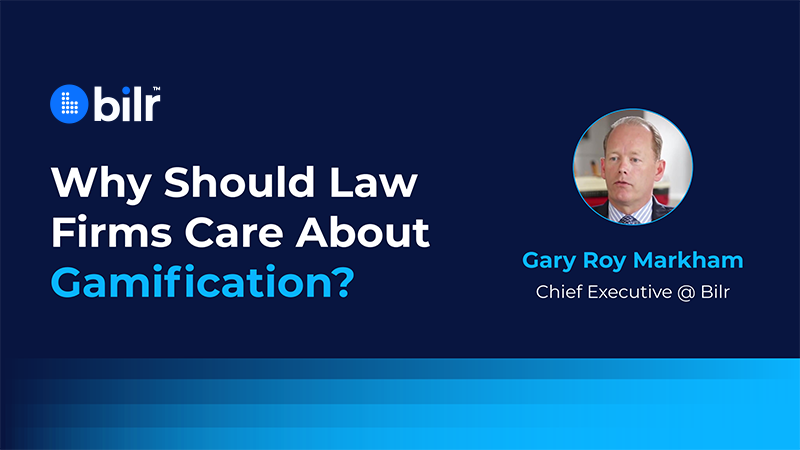Gamification was first conceptualized by Charles Coonradt in his 1984 book "The Game of Work." Many identify Coonradt's work as the predecessor for modern workplace gamification.
Gamification is essentially adding an element of competition. This can both incentivize and motivate, and is often used within the workplace as well as in consumer-facing platforms. Specific to the legal industry, the use of gamification has caused an increase in employee effectiveness, and plenty of law firms have started to implement various versions of it.
Different types of gamification could include an internal competition within a law firm to record more billable hours, or to retain new clients, tracked from a dashboard or leaderboard visible to members of the firm (or walled off and restricted based on seniority, designation and similar). Associates, to name an example, could be incentivized to perform well in order to get on the partner track.
Those law firms that are yet to explore gamification should consider its potential benefits, which we’ll cover in this article.
Gamification Can Improve Law Firm Operations
Gamification is often used to draw professionals out of their comfort zones. This helps employees develop new skills and engage with other members of the firm in a beneficial way. Gamification offers incentives — such as firm-wide recognition — to lawyers and other staff. This can promote efficiency and teamwork among employees as they work towards a common goal: increasing firm profitability.
In her article “7 Examples: Put Gamification to Work,” Debra Donston-Miller reports that businesses have been using gamification for years. Gamification has been particularly useful in human resources and training. Here, professionals are incentivized to get on with monotonous tasks.
Furthermore, new employees might find gamification features exciting during training and on-boarding processes, with various tutorials or training tasks offering extrinsic or intrinsic rewards.
Modern law firms expect their lawyers to continuously refresh their technical knowledge. Having a gamified technological infrastructure can help attract young and talented employees with fresh technical abilities, and a gamified technology course/program could help existing employees get up to speed with new developments.
Rankings and performance measurements are very popular in the legal industry. Because gamification uses publicized ranking to fuel positive behavior and outcomes, it works great as an incentivizing tool for lawyers, encouraging them to perform their best.
Monotonous legal assignments are prime targets for gamification. Gamification can also be used to encourage timely billing compliance, as it provides recognition to lawyers that submit their time entries promptly and in achievement of daily/weekly/monthly billable targets. Additionally, law firms can use gamification to award year-end bonuses.
Tips for Successful Implementation of Gamification
In order to implement gamification, law firms should first identify their target audience — who will be participating in the gamification? Different users might have different motivations. By knowing their target audience, law firms can create powerful gamification programs.
Gamification should also be implemented according to firm goals. To ensure that an implementation supports core goals, law firms should set up performance evaluation procedures. Tracking and reporting on evaluation metrics can mitigate issues during the adjustment period following an implementation.
Billing and timekeeping solutions such as Bilr combine gamification features with key performance indicators. These key performance indicators are color coded in individual lawyers' dashboards. For example, Bilr uses the following color combinations:
- Red for bad performance.
- Yellow for okay performance.
- Green for good performance.
Within the Bilr platform, poor performing lawyers have a constant reminder visible on their dashboard, letting them know that they are not hitting their targets.
Law firms can analyze firm-wide metrics, or even compare different timekeepers against each other or against the wider group as a whole. This allows management to see which lawyers are hitting their goals and performing best.
Is Gamification Good for Law Firms?
Gamification presents an exciting business prospect for law firms. It motivates lawyers and legal staff to achieve more. The gamification experience allows lawyers to get familiar with businesses processes, even ones that have been difficult for them in the past such as new technological developments. Every day, more law firms are implementing different types of gamification as the competitive nature of the legal profession makes it an ideal fit.



